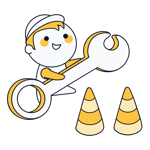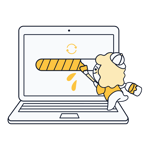Page Experience




Bulk Page Experience Check: Check up to 500 Pages
Page Experience is a collection of metrics that show how good the user experience of a website is. Google has announced that Page Experience will be a ranking factor starting in May 2021. Until now, Page Experience could only be determined by using several tools and only for a single page. With the EXPERTE.com Page Experience Check you can determine the Page Experience automatically for up to 500 subpages.
How to Use
Our Core Web Vital Test offers 3 different modes:
Crawl Website
You set the start URL and we crawl the web page to find more URLs. Crawling is limited to 60s and 500 URLs. We then check the Page Experience for each URL we found.URL List
You send a list of URLs for which we then determine the Page Experience for each URL.Keyword
You define a keyword for which we get the Top 50 results at Google.com. We then determine the Page Experience for each URL.
You can also choose whether the Page Experience should be determined from the point of view of a mobile device (mobile) or a desktop computer (desktop).
Page Experience
In the following we will introduce the different metrics. The first 3 metrics are the so-called Core Web Vitals, which measure the loading speed, interactivity and visual stability of the page.
Largest Contentful Paint (LCP)
The Largest Contentful Paint indicates the time when the browser rendered the largest visible element. This is the point in time at which the main content of the page was most likely loaded.
Good
The LCP is less than 2.5 seconds.Needs improvement
The LCP is between 2.5 and 4 seconds.Poor
The LCP is greater than 4 seconds.
First Input Delay (FID)
The First Input Delay indicates the time from the first interaction of the user to the reaction of the browser. An example of an interaction is the click on a button.
Good
The FID is below 100 ms.Needs improvement
The FID is between 100 ms and 300 ms.Poor
The FID is greater than 300 ms.
Cumulative Layout Shift (CLS)
Cumulative Layout Shift measures the sum of all layout shifts that occur during the lifetime of the page. A layout shift occurs whenever a visible element changes position from one frame to the next.
Good
The CLS is less than 0.1.Needs improvement
The CLS is between 0.1 and 0.25.Poor
The CLS is larger than 0.25
Mobile Friendly
Mobile Friendly indicates whether your page is displayed correctly on mobile devices. This includes for example the specification of the correct viewport and a sufficient font size.
Safe Browsing
Safe Browsing checks whether harmful content has been found on your site. This includes, for example, malware or other unwanted software.
HTTPS
HTTPS checks if your page is secured with an SSL certificate and the connection is made with HTTPS.
No Intrusive Interstitials
No intrusive interstitials means that the content of the site is easily accessible to the user and no annoying pop-ups appear. This metric currently still needs to be checked manually.
Frequently Asked Questions
Instead of tediously searching for individual metrics in various tools, our test automatically checks the page experience metrics for up to 500 subpages. This way you can find problems on your website before the ranking update in May 2021.
The EXPERTE.com Page Experience Test uses the same data as the Google PageSpeed Insights. Therefore, the results are 100% comparable.
In order to prevent abusive use, we currently limit the crawling time to 60s or 500 URLs. The number of URLs per keyword is limited to 50. We reserve the right to adjust these limits at any time.










